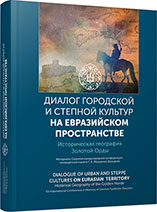К характеристике пространственной организации системы расселения в правобережье Самарского Поволжья в золотоордынский период
On Spatial Organization Characteristics of the Settlement System in the Right-Bank Volga Samara Region During the Golden Horde Period
Author(s): Anna F. Kochkina
Subject(s): History, Archaeology, Human Geography, Historical Geography, Middle Ages, 13th to 14th Centuries, 15th Century
Published by: Издательский дом Stratum, Университет «Высшая антропологическая школа»
Keywords: Volga Upland; Samara Volga region; Golden Horde; settlement system; microdistricts; support frame
Summary/Abstract: The sites of the right bank of the Samara Volga region including the Samarskaya Luka (Bend) of the Volga River and the Usa River watershed constitute a special group of the Golden-Horde period sites of the Middle Volga region. An analysis of the sites topography in the context of geographical features of the area in question allowed defining its territorial structure. On the basis of settlements location features, a zonal model of regionalization is proposed. In the territory of the district, two micro-districts are distinguished: 1) the Usinsk micro-district, 2) a micro-district inside the Samara Bend. Each of them is characterized by an appropriate reference framework of settlement, which is associated with the peculiarities of functioning and settling. In the first case, the settlement occupies the dominant position (the Muranka settlement site), while the second district is characterized by the presence of several key points with the linear interconnection system (Mezhdurechensky hillfort, Malaya Ryazan 2 and Lbische — Novyi Put’ settlements, etc.).
Book: Диалог городской и степной культур на Евразийском пространстве. Историческая география Золотой Орды
- Page Range: 166-169
- Page Count: 4
- Publication Year: 2016
- Language: Russian
- Content File-PDF

